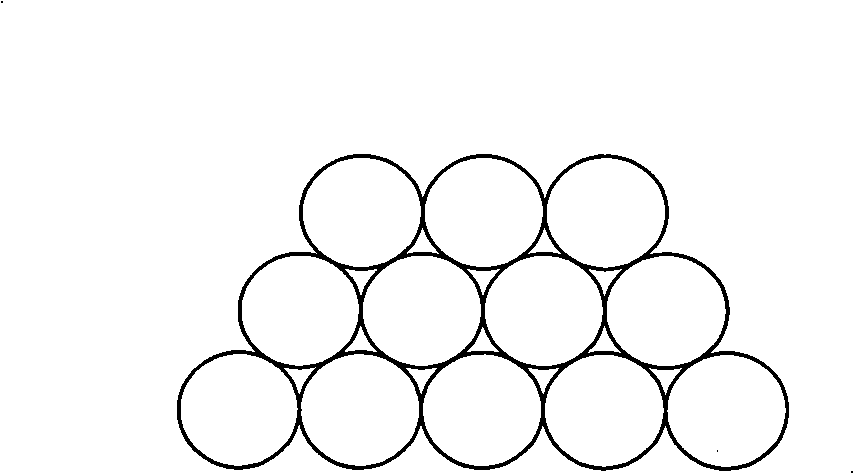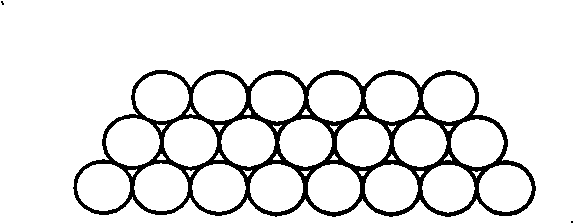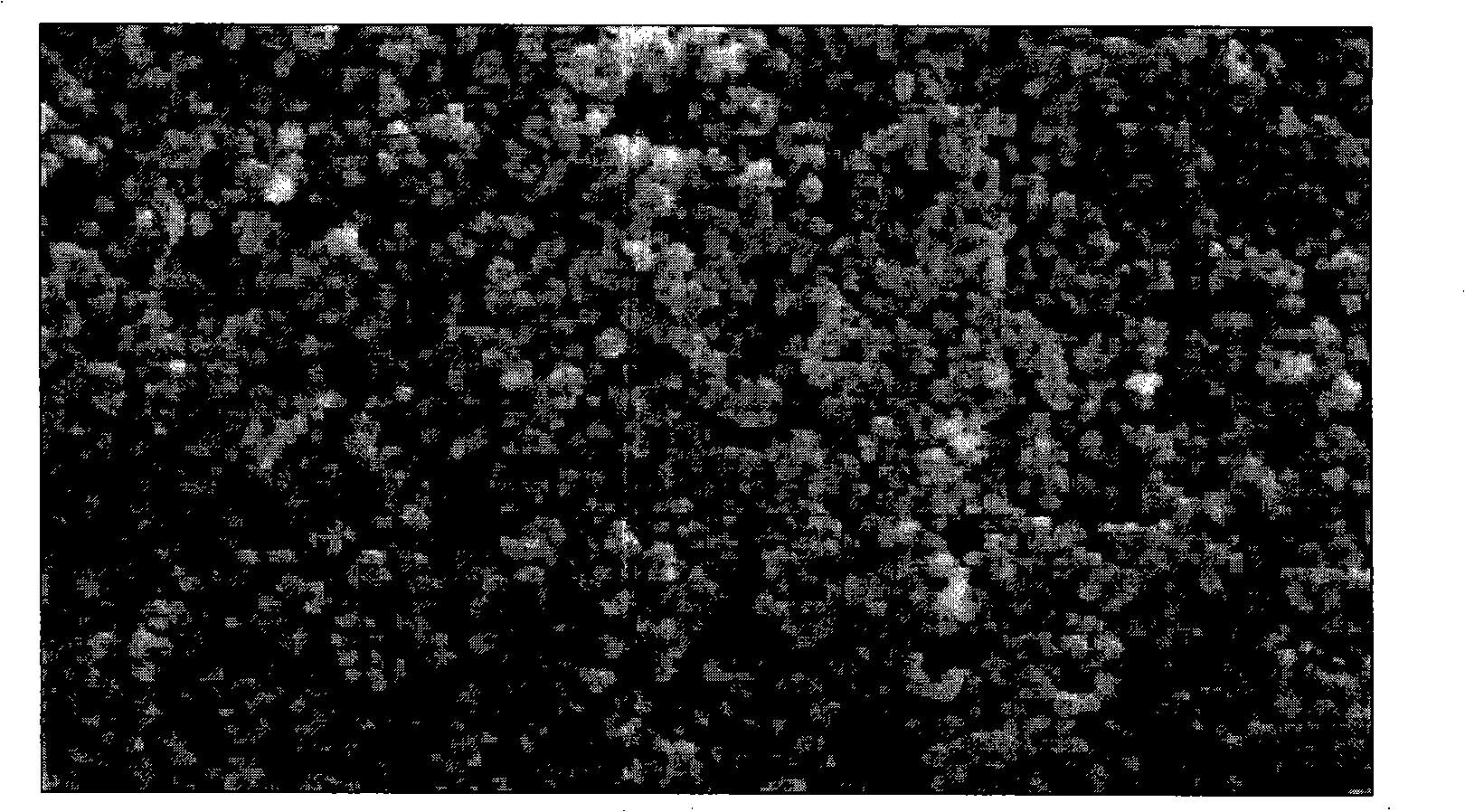Process for preparing nm-class silver powder
A nano-scale silver powder technology, applied in the field of liquid phase preparation of nano-scale silver powder, can solve the problems of inability to meet the electronic industry, unsolved agglomeration problem, self-sintering or agglomeration, etc. High solid density effect
- Summary
- Abstract
- Description
- Claims
- Application Information
AI Technical Summary
Problems solved by technology
Method used
Image
Examples
Embodiment 1
[0016] Weigh 0.8g gum rosin and add to 50ml butanol, stir to dissolve, add 25.5g Ag 2 CO 3 powder and 0.5g triethanolamine, stir evenly to obtain a suspension, heat up the suspension while stirring, control the temperature rise rate to 1°C / min, keep the temperature at 80-100°C, add 5g triethanolamine dropwise within 2-4 hours, add Stir again for 0.5-1h after finishing, lower the temperature to below 50°C, stop stirring, let the silver powder settle, stack the filter cloth and filter paper in the Buchner filter, wash the precipitated powder with alcohol for more than 3 times, and use liquid resin surface chemical treatment , Dry at ≤80°C to obtain nano-silver powder. The performance analysis of the powder is shown in Table 1. The effect diagram of the influence of the particle size of the powder on the thickness of the printing layer and the amount of silver is shown in the attached figure 2 As shown, the powder has uniform size, good dispersion and large specific surface ar...
Embodiment 2
[0018] In Example 1, the Ag 2 CO 3 Change to Ag 2 O, consumption is 21.5g. The performance analysis of the powder is shown in Table 1. The effect diagram of the influence of the particle size of the powder on the thickness of the printing layer and the amount of silver is shown in the attached figure 2 As shown, the powder has uniform size, good dispersion and large specific surface area. image 3 shown. The purity of the powder is high, as shown in Figure 4.
Embodiment 3
[0020] In Example 1, the heating rate was changed from 1° C. / min to 2° C. / min. The performance analysis of the powder is shown in Table 1. The effect diagram of the influence of the particle size of the powder on the thickness of the printing layer and the amount of silver is shown in the attached figure 2 As shown, the powder has uniform size, good dispersion and large specific surface area. image 3 shown. The purity of the powder is high, as shown in Figure 4.
PUM
| Property | Measurement | Unit |
|---|---|---|
| particle diameter | aaaaa | aaaaa |
Abstract
Description
Claims
Application Information
 Login to View More
Login to View More - R&D
- Intellectual Property
- Life Sciences
- Materials
- Tech Scout
- Unparalleled Data Quality
- Higher Quality Content
- 60% Fewer Hallucinations
Browse by: Latest US Patents, China's latest patents, Technical Efficacy Thesaurus, Application Domain, Technology Topic, Popular Technical Reports.
© 2025 PatSnap. All rights reserved.Legal|Privacy policy|Modern Slavery Act Transparency Statement|Sitemap|About US| Contact US: help@patsnap.com



